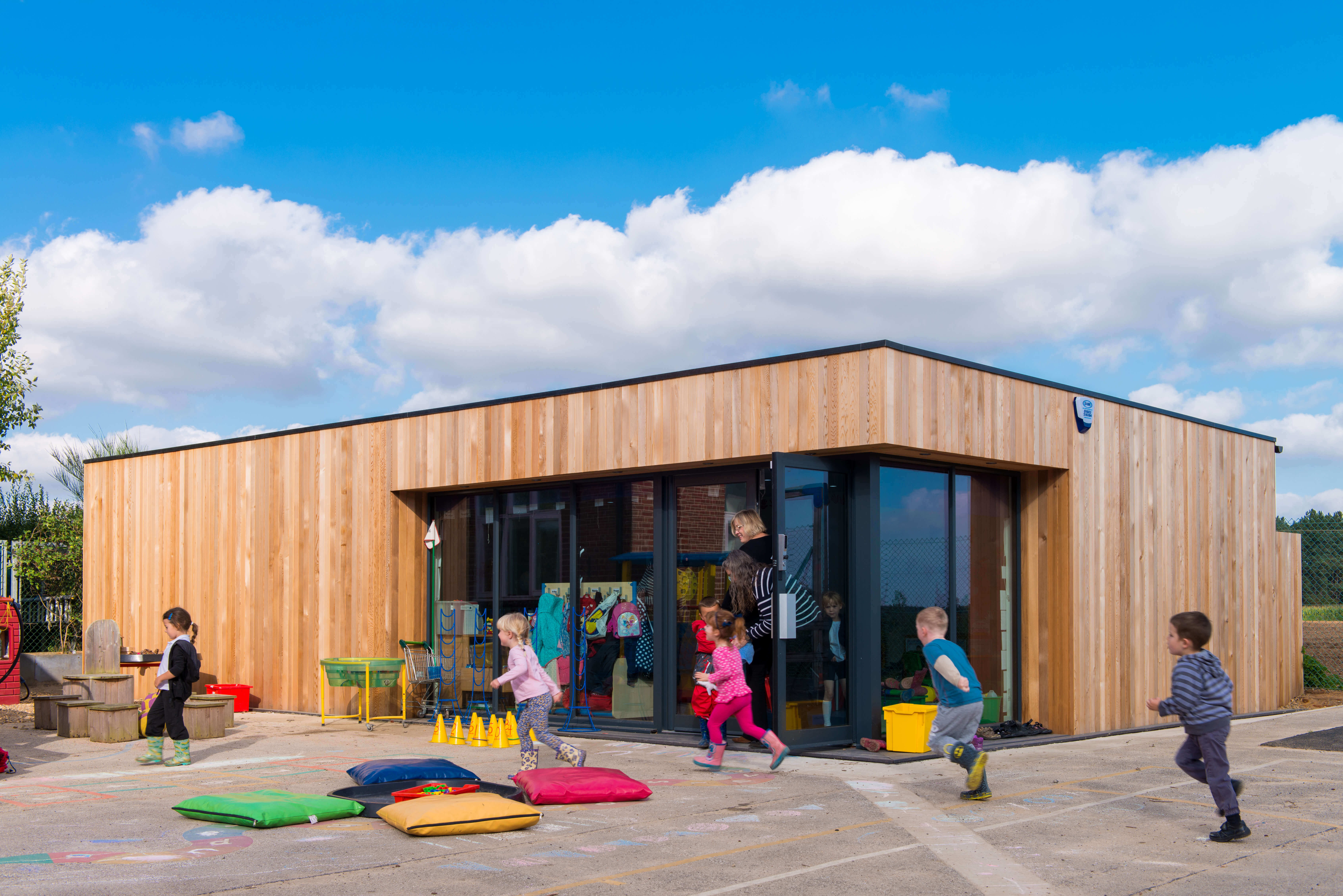OUR GUIDE TO WRITING YOUR MODULAR CLASSROOM SPECIFICATION
So you’ve decided to invest in a modular classroom for your school, and you’re putting together a modular building specification. This specification document is a key element in the planning process as it will help you to clarify what you’re looking for and ensure that you choose the right portable classroom design company – so it’s important to spend some time listing all your requirements.

All modular school buildings are different, but there are common features that they’ll all share. In this article we highlight some of the key areas to focus on when creating your modular building specification.
Design, location and layout. Do you have specific requirements for your classroom design? Traditional “mobile classrooms” are restricted to a given size and layout, but modular buildings for schools can be designed bespoke in order to meet the exact needs of the school. So, if you have particular needs in terms of size, position and type of windows and doors, room configuration, electrical layout and location, it’s important to state these in your modular classroom specification.
Quality and warranty of materials. Will your modular classroom stand the test of time? That depends to a large extent on what it’s made of. Make sure your modular building specification includes a reference to high quality building materials, backed up by a guarantee. When made from good quality timber and other materials, modular school buildings should last for up to 50 years or more.
De-mountable structure. Do you want your mobile classroom to have a fully de-mountable structure – one that can be delivered ready-built to your site? This has several advantages; it protects your investment (allowing the building to be re-located or sold on at the end of its useful life), and affords the quickest possible installation time.

Check how well your modular classroom will be insulated. You’ll all of your modular school buildings to be warm and comfortable for staff and students, without costing too much to heat. Your modular building specification should list good thermal performance, with materials that are airtight, durable and fireproof.
Building Regulations provide the benchmark for thermal insulation performance and afford an easy means of comparison. They detail the U-values (a measure of thermal insulation) – and the lower the number, the better. As a starting point you need to ensure your building complies and offers walls with a U-value of 0.30W/m2K, with floor and roof both 0.25W/m2K. You should also ask about sound insulation, particularly noise attenuation between separate rooms.
Security is key. As modular school buildings are separate from the main school building, security is a particular concern. Ask for fire and security alarms to be connected to the main school building and specify toughened and laminated glazing with multi-point locking on all doors and locking windows with safety opening restrictors for your modular classroom.

Don’t underestimate how much you’ll need! When creating your modular building specification, work out how much room will be required to house all your school resources, in addition to the space needed for teaching and learning. The best portable classroom design will incorporate clever storage solutions that maximise your teaching space without compromising on storage.
Wheelchair accessibility is essential throughout your school (and enforced by the Disability Discrimination Act), so your portable classroom design should incorporate this as standard. Ask for accessible WCs, entrance thresholds and ramps.
Practical facilities. Will you need sinks, toilets or kitchen facilities within your modular school building? Consider which features you want to have, including any special requirements such as infant-height WCs, basins and sinks or wheelchair accessibility.

Wi-Fi. The ability to connect wirelessly to the internet is an essential item on your checklist, so make sure Wi-Fi is included in your modular building specification. Of course, you’ll also need electricity (with cables preferably hidden from sight) to power your lights and IT equipment!
So there you have it – a guide to some of the things you’ll want to include in your modular building specification. This isn’t a comprehensive list, but should give you some ideas to get started.
If you’d like some more inspiration, why not check out our modular classroom case studies and our school building designs to see what might be possible for your school.
